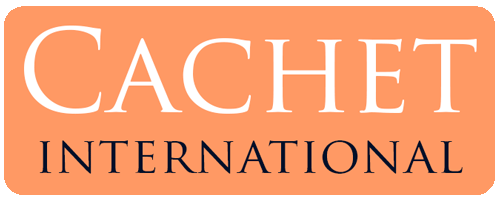To discuss a corporate intelligence or financial investigation matter, or to learn more about Cachet International’s investigative resources in your jurisdiction, contact Michele Palmer by email or at 602-899-3993.

Is a Bank Receipt of Deposit Reliable Proof of the Existence and/or Ownership of a Bank Account?
While a bank deposit receipt may be a good indicator of the existence of an account or the identity of the account holder, it is not completely reliable as “proof” by itself.
This article examines the question of whether a bank receipt of deposit is dependable proof of the existence of a bank account and its actual account holder. Answer: In today’s world, the answer is far from clear.
Please note that Cachet International and its principals do not provide legal advice. We are asset investigators, not lawyers. However, in this article we will share with you a few of our observations regarding attempts by clients, investigators and lawyers to use a simple tactic to obtain proof of the actual beneficiary of a bank account. The point of this article is to show that the resultant “evidence” may not be as reliable as it may appear.
In recent years, we have seen an increasing number of investigators or sometimes “proactive” clients claiming that they have “concrete proof” of the existence of a bank account and/or the actual account holder. All too often this “proof” is a bank receipt of deposit. However, that “proof” is all too often misleading.
When we began asset tracing in our private practice almost 20 years ago, many investigators sought to obtain returned checks or deposit receipts to use as evidence that the target of their investigation was the owner or at least beneficiary of a bank account. However, as time passed, this whole issue has become significantly more complex.
In short, this technique involved sending a token payment (e.g., US $50 to $500) by check to an account – preferably addressed to the alleged account holder of interest – and receive a bank receipt of deposit or an endorsed check. This provided the sender with the signature of the account holder or his representative on the back of the check (proof of receipt), and it was believed to be solid evidence. That method worked if you could send a check to the target who accepted the check, signed it and deposited it into his account. While that is still good evidence, the issue of bank deposit receipts has become more ambiguous.
As bank transactions have become more global and digital in nature, wire transfers are now the most common means of transferring funds – especially on an international level. Digital transfers are faster, cheaper, easier to manage and provide for almost immediate payment. However, there is a variety of issues regarding the confirmation of the receipt of funds by the intended beneficiary.
To ensure that we are “talking the same language,” below is a review of a few key terms that are used for electronic payments or “wire transfers.”
- A wire transfer is an electronic transfer of funds, such as one that is made over the Federal Reserve Wire Network or the Clearing House Interbank Payments System, among others. A wire transfer involves the movement of funds from one account to another.
- A debit advice is also called a “debit memorandum,” “debit note” or “debit.” A banker sends a debit note to customers to inform them of deductions from their accounts. In other words, a debit refers to a decrease in a deposit account balance, such as a check posted to the account. These notices are now received almost in real time but show only that the customer’s account was debited, not that the funds were delivered to the addressee.
- A notification advice or credit advice is a bank-generated confirmation notice of a received incoming wire transfer. The notification advice identifies the amount sent, date sent, and confirmation number. The advice may not identify the sender or the customer/recipient.
- SWIFT is first and foremost a secure private network between financial institutions. A SWIFT copy or document is an extract of the electronic payment document sent to the correspondent bank or beneficiary bank. It acts as a confirmation of payment made from your bank and informs the beneficiary of the value date of transaction. Therefore, a SWIFT confirmation is merely a confirmation receipt that the message has been delivered to the network and passed basic format checks. At this stage, there is no guarantee that the message has been delivered to the beneficiary bank.
(NOTE: While a SWIFT copy or document is an extract of the electronic payment document sent to the correspondent bank or beneficiary bank, it also provides information on the date and amount of the transaction and contains details regarding the beneficiary. A debit advice provides confirmation that a payment instruction has been processed by the originating bank, but it will normally lack details regarding the beneficiary.)
When a client or another investigator brings us “proof” in the form of a debit advice or SWIFT document, we have to advise them that neither is an absolute guarantee that funds have been deposited to a specific account or account holder. Further, both the debit advice and SWIFT document are normally just automated responses and are of very little evidentiary value.
Incidentally, the most effective means to obtain “proof” of deposit with a specific account is what is known as a “trace wire.” A trace wire is a request that is sent to the receiving bank to confirm that the incoming wire was credited to the beneficiary's account.
The following examples illustrate some of the additional issues that are involved in arriving at real “proof” of deposit.
- Even if the deposit is sent correctly, more sophisticated account holders and banks may not accept it. Sophisticated account holders and banks often put restrictions on deposits into the accounts, particularly when the accounts belong to high net worth persons who value their privacy and seek to avoid simple methods to confirm their ownership and/or control of a bank account.
- In recent years, we have seen many cases in which investigators or even proactive clients have made token deposits (e.g., US $500) and the banks refused the deposits, following their confidential instructions from their clients. In several of these cases, further discovery showed that the bank accounts did exist and were controlled by the target beneficiaries, but their precautions had given the initial false impression to the contrary. As an aside, such restrictive instructions are completely legal. For example, we have seen such account holders give instructions to their banks such as “do not accept deposits less than X amount in value.” (We saw this once for a “sweep account” whereby deposits of less than US $500,000 were not to be accepted unless they came from designated accounts). We have also seen occasions in which banks were instructed not to accept deposits except from a list of “approved” depositors. In one case, an account holder insisted on personally approving or rejecting all depositors in advance, if they were not on such a list of approved depositors.
- As the number of daily transactions has increased exponentially in recent years, banks have largely automated the “deposit receipt” process. We have seen dozens of cases in which investigators or proactive clients made token deposits and immediately received a debit advice or SWIFT document. However, when they attempted to use these receipts as “evidence,” the beneficiary banks stated that the deposits were accepted by mistake. The banks further claim that internal audits eventually detect these errors, but often the original depositors cannot be identified, and the banks simply keep the money.
- In recent years, we had one client present us with copies of his debit advice documents and SWIFT documents for some large transfers from his own account. The client claimed to have received these documents from his own banks. However, after painstaking research, we determined that the funds traveled over completely different routes than shown on the documents, and the ultimate beneficiary accounts were two continents away from what the documents showed.
In other words, a debit advice or SWIFT document is not necessarily proof that the funds were deposited into a specific beneficiary account.
If this seems hard to accept, simple “Google” the term “problems with deposit receipts” and see how many “hits” you get. In addition, you might be interested to know that the website of the U.S. Office of the Comptroller of the Currency (OCC) states that a “deposit receipt is not conclusive evidence that you deposited the funds.” If the deposited item was a check, you will need to contact the party that provided the check to you and obtain a copy of the front and back of the check. If the deposited item was cash, and the bank does not agree to honor the receipt, you will need to consult with legal counsel about your rights.
(NOTE: The OCC is an independent bureau, within the U.S. Department of the Treasury, that serves to charter, regulate, and supervise all national banks and thrift institutions and the federal branches and agencies of foreign banks in the United States.)
A major international bank in the U.K. has the following notice at the bottom of each of its “payment debit advice” documents:
- “This notification is not confirmation of receipt of the funds by the beneficiary – the Bank does not accept any liability whatsoever for any loss or damage arising in any way for the use of or reliance on the information.”
In another example, one of our colleagues deposited US $30,000 in cash into a major U.S. bank and received a bank deposit receipt directly from the bank. However, the bank bookkeeping system registered this deposit as withdrawal, and that matter took almost three weeks for the bank to correct - after it was notified of the error.
In short, as you can see, the bank deposit system is not completely reliable. While a bank deposit receipt may be a good indicator of the existence of an account or the identity of the account holder, it is not completely reliable as “proof” by itself.
All Rights Reserved | Cachet International, Inc.
Registered with the Arizona Department of Public Safety under Arizona License 1536489

